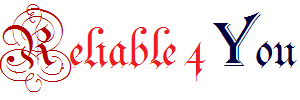DESCRIPTION ABOUT DECISION MAKERS ON THE FIELD OF CRICKET
The Game Of Cricket On The Field Is Regulated By Two Umpires, 1st One Is Straight Umpire Of The Game Who Stands Behind The Wicket At The Bowler’s End, The Other In A Position Called “Square Leg“, Which Is A Position Of 15–20 Meters Away To The Side Of The “On Strike” Batsman. And The 3rd Umpire Is Sitting In A Cabin And Viewing The Whole Match On A Live Screen & From There He Has To Look Towards The Field And Decisions Can Be Made Accordingly. At International Level There Is Also A Third Umpire On The Field Called Referee & At The End Of Each Over, The Umpires Change their Positions.
STRAIGHT UMPIRE 
- When The Bowler Delivers The Ball, The Straight Umpire At The Wicket Is Positioned Between The Bowler And The Non-Striker (Runner). The Umpire At The Bowler’s End (Straight Umpire) Makes Decisions On LBW Appeals, No Balls, Wides And Leg Byes. The Umpires Indicate About No Balls, Byes, Leg Byes, Wides, Boundaries And Sixes To The Scorers, Who Keep A Running Total Of The Runs Scored To The Displaying Score-Board. The Straight Umpires Confer If There Is Doubt About Playing Conditions And Can Postpone The Match By Taking The Players Off The Field If Necessary, For Eg. Rain Or Deterioration Of The Light.
SQUARE LEG UMPIRE

- The Square Leg Umpire Will Judge Stumping The Wickets And Run Outs. If There Is An Injured Batsman With A Runner Or If There Is A Condition Where Left And Right Handed Batman Are On The Pitch & Then, If Right-Handed Batsman Is On Strike And Gets A Single Making The Left-Handed Batsman Now On Strike, This Makes Square Leg Umpire Now Move Over To The Other Side Of The Field So He Is Now In The Square Leg Position For The Left-Handed Batsman.
- If The Square-Leg Umpire Elects To Stand At Point, He Is Required To Inform Both The Batsmen, The Captain Of The Fielding Team, And His Colleague. He May Also Move To The Point Position Later In The Afternoon If The Setting Sun Prevents A Clear View Of The Popping Crease At His End.
THIRD UMPIRE
- Off The Field And In Televised Matches, There Is Often A Third Umpire Who Can Make Decisions On Certain Incidents With The Aid Of Video Evidence. The Third Umpire Is Mandatory Under The Playing Conditions For Test Matches And Limited Overs Internationals Played Between Two ICC Full Members. The Third Umpire Uses TV Replays To Rule On Run Outs, Stumping S, Whether A Ball Has Hit The Ground Before Being Caught Or When It Is Unclear If The Ball Has Crossed The Boundary. However, The Third Umpire Can Only Make A Decision If They Have Been Asked To Do So By The Field Umpires Out On The Ground Field.
REFEREE 
- At International Level There Is Also A Umpire Who Is Called A Referee. If A Player Disagrees With The Umpire About A Decision And Argue Their Case, The Referee Can Fine The Player In Question. A Referee Is Someone Whose Job Is To Ensure That Play Is Within The Laws Of Cricket And The Spirit Of The Game.
SCORER 
- Off The Field, The Match Details Including Runs And Dismissals Are Recorded By Two Official Scorers, One Representing Each Team. The Scorers Are Directed By The Hand Signals Of An Umpire.
Scorer Signals By Umpire 
- Watch the Above Presented Hand Signal Of The Umpire For The Decisions Taken With Effect For Scorers To Update.


